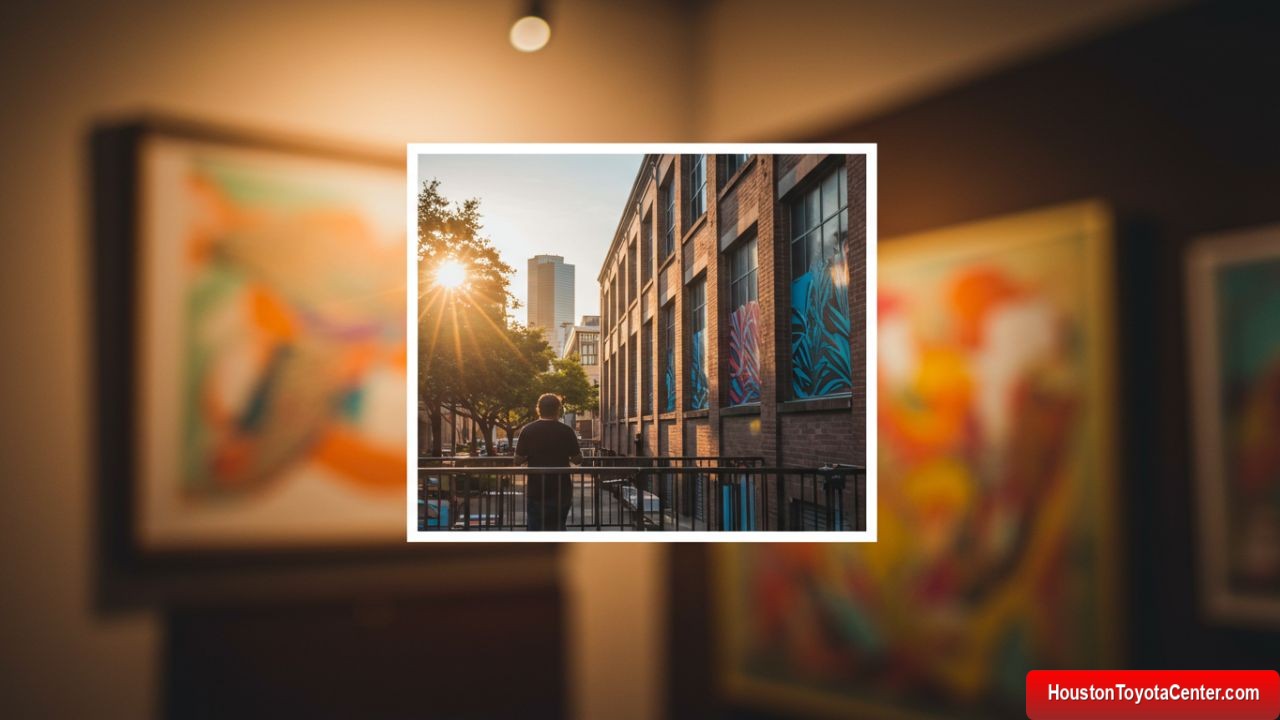Houston, Texas, often known for its space-age skyline, bustling energy sector, and culinary scene, is fast becoming a hub for the arts. Over the last few decades, the city’s art scene has undergone a transformation, driven by community-driven initiatives, global attention, and institutional support. With its diverse population, rich cultural heritage, and collaborative spirit, Houston has created a unique artistic ecosystem where emerging artists and established institutions thrive.
This article will explore the factors behind Houston’s burgeoning art scene, the key players involved, and how the city is positioning itself as an international arts destination.
1. A City of Diversity: The Heart of Houston’s Art Scene
Houston is one of the most ethnically diverse cities in the United States. According to the U.S. Census, nearly 50% of Houston’s population is made up of Hispanic, African American, and Asian communities. This diversity is reflected in the city’s art scene, where artists from a variety of cultural backgrounds are bringing new perspectives and voices to the forefront.
FREE: Quickly identify and understand problems with your vehicle 🚘
CLICK HEREThe multicultural nature of Houston has given rise to a variety of art forms and practices, including contemporary art, performance art, traditional Mexican muralism, African American culture-driven art, and Asian heritage-inspired works. Local galleries and museums highlight these cross-cultural intersections, allowing Houston’s art scene to be a true reflection of its demographic makeup.
For example, the Museum of Fine Arts Houston (MFAH) regularly features exhibitions showcasing Latinx, African American, and Indigenous artists. Similarly, the Contemporary Arts Museum Houston (CAMH) plays a key role in amplifying the voices of emerging artists, especially those from minority backgrounds.
Houston’s vast cultural influence has made it a breeding ground for the development of new and innovative art forms, resulting in an eclectic mix of traditional and avant-garde works.
2. The Role of Art Institutions: Building a Cultural Infrastructure
Houston’s success in the art world would not have been possible without the support of its museums, galleries, and cultural institutions. These entities have played a pivotal role in fostering artistic growth, expanding accessibility, and attracting visitors from around the world.
The Museum of Fine Arts, Houston (MFAH) stands as a monumental force in the city’s art scene. With a collection that spans over 6,000 years of history, the museum is home to significant works from around the globe, including major European paintings, contemporary art installations, and African and American art. MFAH’s dedication to presenting both classical and contemporary works has helped to establish the city as a global art destination.
In addition to MFAH, there are smaller but equally significant institutions like the Contemporary Arts Museum Houston (CAMH) and The Menil Collection. CAMH, with its cutting-edge exhibitions, focuses on contemporary works and provides an invaluable platform for emerging artists. The Menil Collection, founded by art patrons John and Dominique de Menil, is home to one of the most extensive collections of surrealist art in the world, as well as works by American and contemporary artists.
Another important aspect of Houston’s art infrastructure is the Art League Houston, which helps nurture local talent through educational programs and community engagement, as well as offering a space for new and experimental artwork.
Houston is also home to the Houston Museum of Natural Science, which often collaborates with the art community on projects that explore the intersections of art, science, and nature. The Rice University Art Gallery is a critical platform for the academic and artistic community, bringing together students, professors, and artists in a collaborative space.
The steady growth of these institutions has created a robust network that enhances the vibrancy of the city’s cultural landscape. By curating innovative exhibitions and hosting world-class events, Houston’s art institutions are building a cultural infrastructure that supports both established and emerging talent.
3. Art Districts and Galleries: A Flourishing Creative Neighborhood
Houston’s art scene extends beyond its well-known museums and institutions into the streets, galleries, and art districts that dot the city. The city has witnessed a rise in contemporary art spaces, both in traditional galleries and non-traditional venues such as warehouses, shipping containers, and abandoned buildings. These creative hubs have allowed artists to experiment and engage with the public in new and exciting ways.
The Houston Heights area has become one of the most vibrant neighborhoods for contemporary art. This historic district is home to a mix of galleries, open studios, and local art shops. The Heights Houston Arts Festival, an annual event that showcases works by local artists, has become a cornerstone of the city’s artistic identity.
The Washington Avenue Arts District is another area that has seen a surge in art spaces. Located just north of downtown, this district is home to various galleries and artist studios, as well as dynamic public art installations that adorn the neighborhood.
East Downtown (EaDo) is also known for its creative energy, with several alternative art spaces and installations scattered throughout the area. The neighborhood has become a favorite spot for young artists who are looking for cheap studio spaces and innovative collaboration opportunities.
Additionally, the Third Ward and Fifth Ward are culturally significant areas in Houston, with numerous street artists and grassroots movements contributing to the ever-growing art scene. These communities have historically been home to African American and Mexican American populations, whose cultural influence is evident in the murals and street art that line the walls of local buildings.
4. Public Art and Street Art: Making Art Accessible
One of the key features of Houston’s art scene is its emphasis on public art and street art. The city has invested significantly in public art projects, which have contributed to the aesthetic and cultural landscape in many neighborhoods.
The Buffalo Bayou Park is one of the most prominent public spaces in Houston where art and nature collide. The park is home to the Cistern, a 1920s underground reservoir that has been converted into an art space, hosting immersive exhibitions that engage visitors with both art and architecture. Throughout the city, murals, sculptures, and installations can be found on walls, in parks, and even along highways, giving Houston a unique and colorful identity.
Houston has become a haven for street artists, who have been able to express their creativity freely in public spaces. The Houston Graffiti Park in the East End, for example, serves as a platform for artists to create large-scale murals, turning the entire park into an ever-evolving canvas.
In addition, the Art Blocks program, which is a collaboration between the City of Houston and various art organizations, has brought art to public spaces like bus stops, crosswalks, and bridges, turning everyday urban elements into artistic statements.
By promoting and investing in public art, Houston has made art accessible to a broader audience, allowing people from all walks of life to interact with and enjoy art in their daily environments.
5. Art Events and Festivals: Bringing Global Attention to Houston
Houston’s growing art scene is further strengthened by its prestigious art events and festivals that attract both local and international visitors. These events play a significant role in promoting the city’s cultural offerings and bringing global attention to the city’s artists.
One of the most notable events is the Houston Art Car Parade. Every year, hundreds of artists transform vehicles into elaborate pieces of art, creating a colorful and eccentric spectacle that draws huge crowds. The parade celebrates Houston’s unique creative spirit and has become one of the largest gatherings of its kind in the world.
The Houston Museum of Contemporary Art’s annual Bayou City Art Festival is another highlight, where artists from around the country come together to showcase their work. The festival attracts thousands of visitors and is one of the premier cultural events in Houston, contributing to the city’s identity as an art hub.
Other annual events like FotoFest, an international photography festival, and The Texas Contemporary Art Fair, have cemented Houston’s position on the global art map. These events provide artists with the opportunity to connect with collectors, curators, and art lovers from around the world.
6. The Future of Houston’s Art Scene: Emerging Trends and Opportunities
Looking to the future, Houston’s art scene shows no signs of slowing down. The city’s art institutions, galleries, and artists are constantly evolving, with new projects and collaborations emerging regularly.
One significant trend is the growing focus on art-tech collaborations, where digital technology and art intersect. Houston’s art institutions are beginning to embrace virtual reality (VR), augmented reality (AR), and digital media as part of their exhibitions and educational programming. This innovation is opening up new possibilities for artists and audiences alike.
Additionally, Houston is becoming an increasingly important center for art education, with institutions like the University of Houston offering advanced degrees in art and design, while local art schools and independent workshops foster a new generation of talented creators.
As more artists and institutions continue to establish themselves in Houston, the city is poised to attract even more international attention. With its unique blend of history, diversity, and innovation, Houston’s art scene will only continue to flourish in the years to come.
Conclusion
Houston’s art scene has come a long way in recent years, evolving into one of the most dynamic and exciting art hubs in the United States. With its rich cultural diversity, dedicated institutions, public art initiatives, and thriving galleries, the city has cultivated an environment where artists from all walks of life can flourish. As the city continues to invest in art education and foster international collaboration, there is no doubt that Houston’s place in the global art world is secure. Whether through large museum collections, public murals, or avant-garde performance art, Houston’s artistic future looks brighter than ever.


Leave a Reply